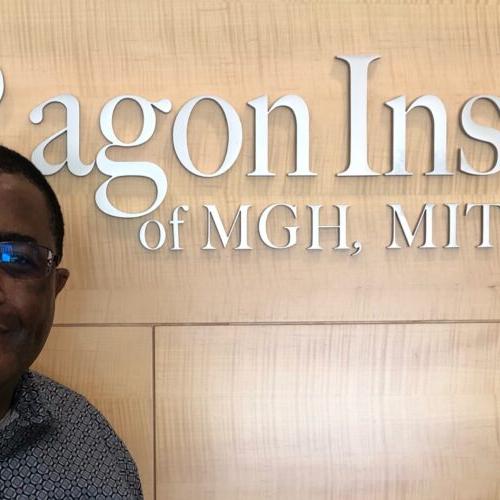By Emily Makowski
Sikhulile Moyo discusses the benefits of international collaboration and a culture of transparency
Last week, the Ragon Institute welcomed virologist Sikhulile Moyo, PhD, laboratory director of the Botswana-Harvard AIDS Institute Partnership (BHP) and research associate at Harvard T.H. Chan School of Public Health, for a visit. Moyo is a collaborator with Ragon members Mathias Lichterfeld, MD, PhD, and Xu Yu, MD. They are working to understand the dynamics of HIV reservoirs—HIV-infected immune system cells in the body that are not actively producing the virus—in early-treated infants and adolescents in Botswana. In a Science Translational Medicine study from 2019, they found that treating newborn infants with antiretroviral therapy (ART) restricted the size of viral reservoirs, providing strong evidence that infants with HIV infections should be treated with ART as soon as possible after birth.
Moyo, Lichterfeld, and Yu are thinking about the next steps in their field. “There’s so much [in] the world that could benefit from the work that is being done at the Ragon, so we want to expand these studies,” Moyo says, adding that they want to apply for multiple grants to advance this research. During his visit to the Ragon, he also toured the lab space to examine equipment and resources and gather ideas for establishing some of the same cutting-edge technology in his lab in Botswana.
Moyo is interested in bringing Botswanan postdocs to the Ragon and also in bringing Ragon postdocs to the BHP. “We have opportunities for collaborative exchange in both directions,” he says. One postdoc who has ties to both institutions is Catherine Koofhethile, PhD, originally from Botswana and currently a postdoc in the Lichterfeld Lab. She will be returning to Botswana as faculty at the end of this year to work with Moyo. Koofhethile volunteered in the BHP before moving to the U.K., South Africa and the U.S. to complete advanced degrees and further her research career. “She’s always been inspirational to other young people, especially women in science in our region,” Moyo says. With her help, along with the efforts of many other researchers, the labs will work together to share scientific understanding.
“I’m very hopeful and enthusiastic about the possibilities that are being borne out of these collaborations … and of course some of the preliminary data that is coming out. It really shows that we have a potential to contribute to the next generation of the science around an HIV cure,” he says.
Moyo has made significant contributions to research on other viruses as well. In May of this year, Moyo was named to TIME magazine’s annual TIME100 list of the 100 most influential people in the world alongside Tulio de Oliveira, director of South Africa’s Centre for Epidemic Response and Innovation, for identifying the Omicron variant and helping to alert the world of its existence. When Moyo became the lab director of the BHP, he established a program on pathogen genomics that enabled him to work with Botswana’s public health system when the COVID-19 pandemic hit. Through this program, researchers established systematic surveillance of SARS-CoV-2 variants of concern through samples obtained from individuals throughout the entire country. “I think it positioned us to be at the gate of understanding variants and viral evolution. It was not an accident that we were able to detect the [Omicron] variant … when we saw something unique, it was because we were doing this on a weekly basis,” he says.
It’s been a “unique opportunity” to be named to the TIME100 list, Moyo says, but he adds that the months immediately following the discovery of the Omicron variant were difficult. Travel bans to countries in southern Africa were put into effect, there were vaccine delivery issues, holiday plans were cancelled, and scientists were often blamed. What helped Moyo was his support network and his belief as a scientist in a culture of transparency.
“If you find something, whether good or bad, you need to be transparent about the data, and we think that alerting the world averted a lot of deaths,” he says. “I think it saved many lives.”





